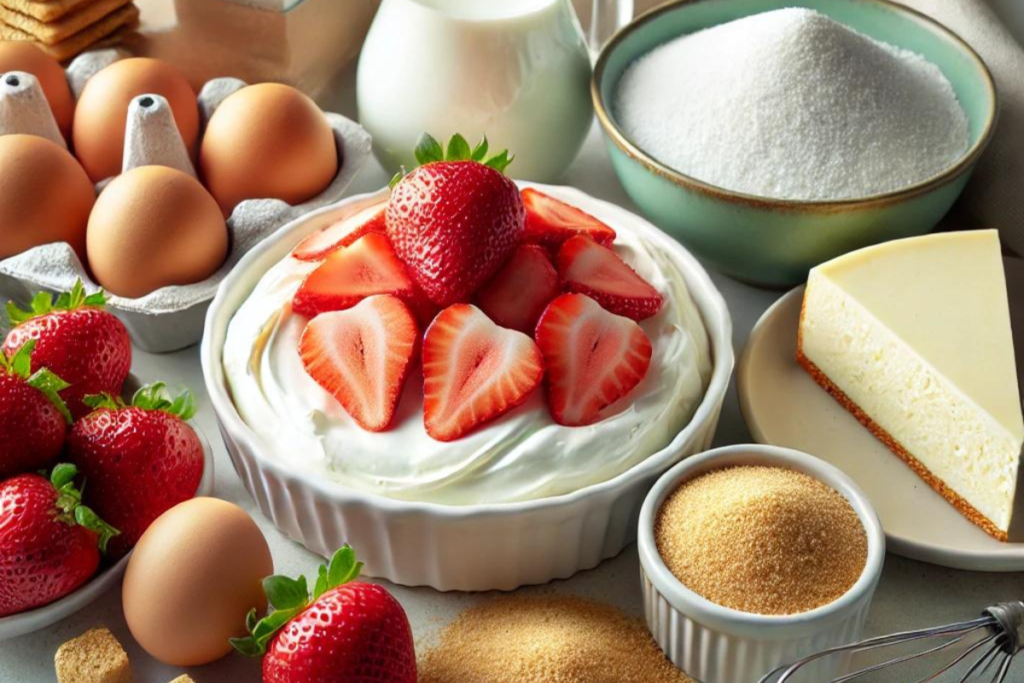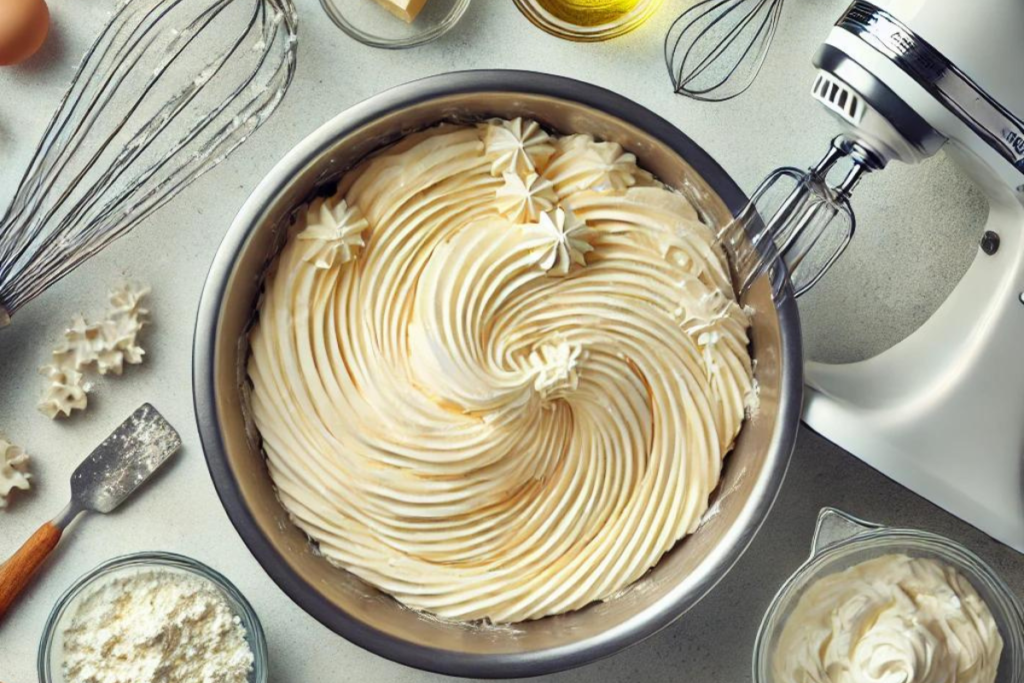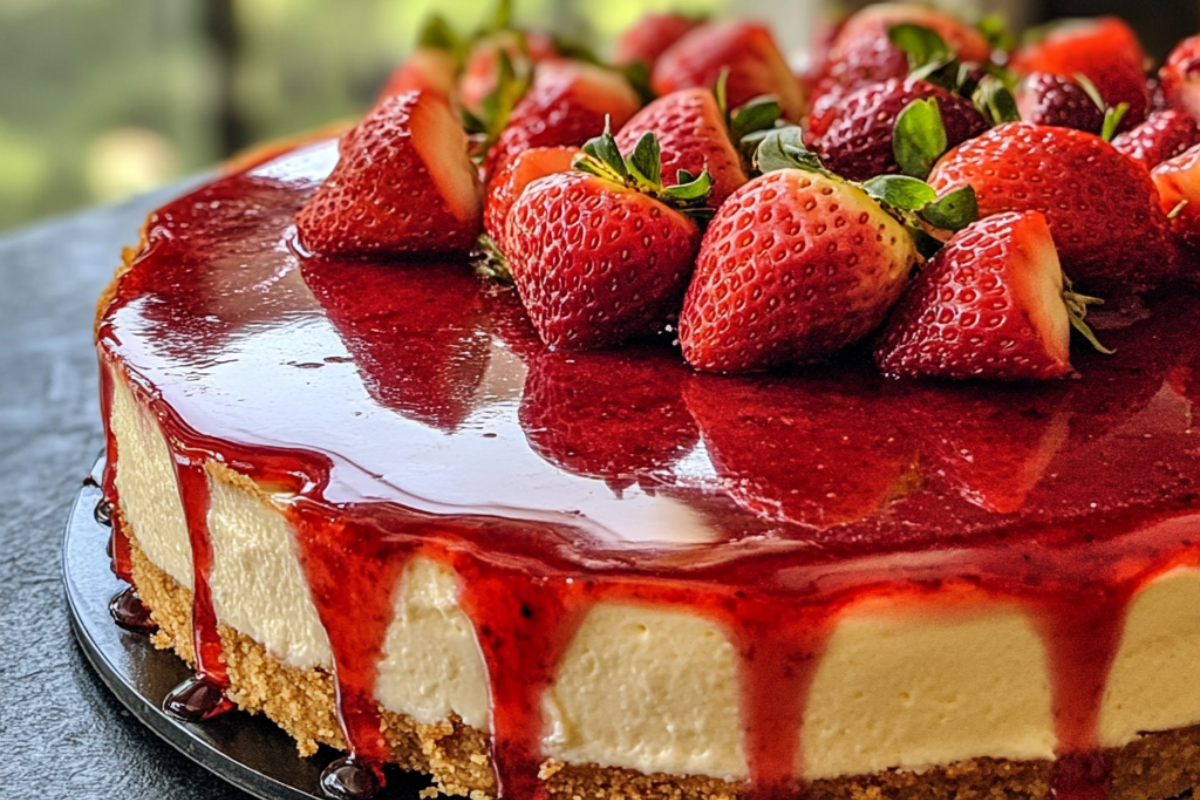A cheesecake should be smooth, creamy, and firm. But when your strawberry cheesecake turns out runny, you may find yourself asking: Why is my strawberry cheesecake runny? Understanding the causes behind this issue will help you avoid it next time. In this article, we’ll explore the reasons and solutions to fix your cheesecake.
How Ingredients Impact Cheesecake Texture

If you’ve ever wondered, why is my strawberry cheesecake runny, one of the main reasons is the choice of ingredients. Using the wrong types of ingredients, like low-fat cream cheese, can introduce too much moisture into your cheesecake.
- Cream Cheese: First and foremost, always use full-fat cream cheese. Low-fat or cream cheese spread contains more moisture, which prevents the cheesecake from setting as it should. For more tips on using cream cheese effectively, check out this guide on how to melt cream cheese.
- Eggs: Moreover, eggs play a key role in holding the cheesecake together. However, overbeating them can add too much air, causing the cheesecake to rise and then fall, leaving the center runny. Beat the eggs only until they’re just mixed in.
If you want more baking tips, take a look at this helpful guide on avoiding soggy desserts.
Common Baking Mistakes to Avoid

Even if you’re using the right ingredients, certain mistakes can still cause problems. If you overmix the batter, it might make your cheesecake collapse and result in a runny texture. This is another possible answer to why is my strawberry cheesecake runny.
- Low-Fat Ingredients: Using low-fat cream cheese or sour cream introduces extra moisture, leading to a softer texture. Always choose full-fat ingredients to get the best consistency.
- Overmixing the Batter: Additionally, overmixing adds too much air, causing the cheesecake to collapse after baking. This leaves the center runny. Instead, mix the ingredients just enough to combine them.
For more tips on avoiding texture problems, check out our guide on why cream cheese pound cake falls.
The Importance of Proper Chilling
Proper chilling is essential for setting your cheesecake. If you skip this step or don’t chill it long enough, the center will remain soft, and the texture won’t be firm.
- Chill Time: Ideally, your cheesecake should chill for at least 4–6 hours. For the best results, though, let it sit in the refrigerator overnight. This extended chill time allows the cheesecake to firm up properly.
- Fridge Temperature: In addition, ensure your fridge is set below 40°F. If the temperature is too warm, the cheesecake may not set as it should.
Troubleshooting Strawberry Cheesecake Issues
Strawberries add delicious flavor to cheesecake, but they also introduce a lot of water, which can cause texture issues. Here’s how to avoid that:
- Strawberry Topping: Because strawberries contain a lot of moisture, they can cause the cheesecake to turn runny. To prevent this, cook the strawberries beforehand or add some cornstarch to the topping to thicken it.
- Graham Cracker Crust: Additionally, if your graham cracker crust becomes soggy, it can contribute to the overall moisture in the cheesecake. To fix this, make sure to bake the crust thoroughly and let it cool completely before adding the filling.
For another tasty strawberry dessert idea, try this strawberry pie cream cheese crumb cake.
Quick Fixes for a Runny Cheesecake
If your cheesecake is still turning out runny despite your best efforts, here are some quick fixes that might help:
- Check the Temperature: First, use a thermometer to ensure the center of the cheesecake reaches at least 150°F. This helps the cheesecake set properly by ensuring the eggs are fully cooked.
- Thicken the Batter: Next, if your batter is too thin, you can add a bit of cornstarch or gelatin to help firm it up.
- Cool Slowly: Finally, let the cheesecake cool at room temperature before placing it in the fridge. This prevents cracks and helps the cheesecake set evenly.
To avoid a runny cheesecake, you need to select the right ingredients, follow proper baking techniques, and allow enough chill time. By following these steps, you’ll enjoy a cheesecake that’s firm, creamy, and perfectly delicious.
If you’re looking for more helpful baking tips, check out our guide on melting cream cheese and why cream cheese pound cake falls.
